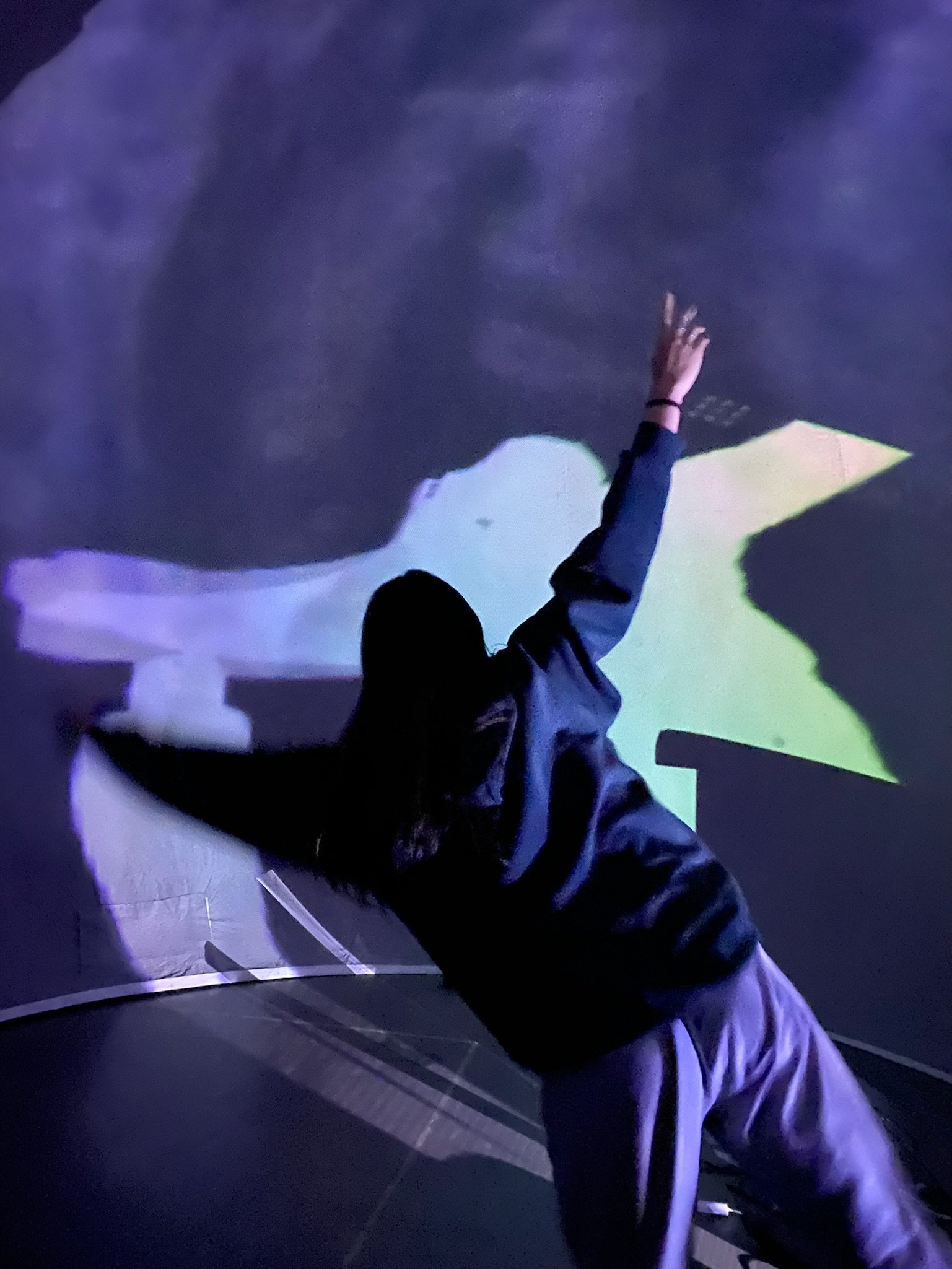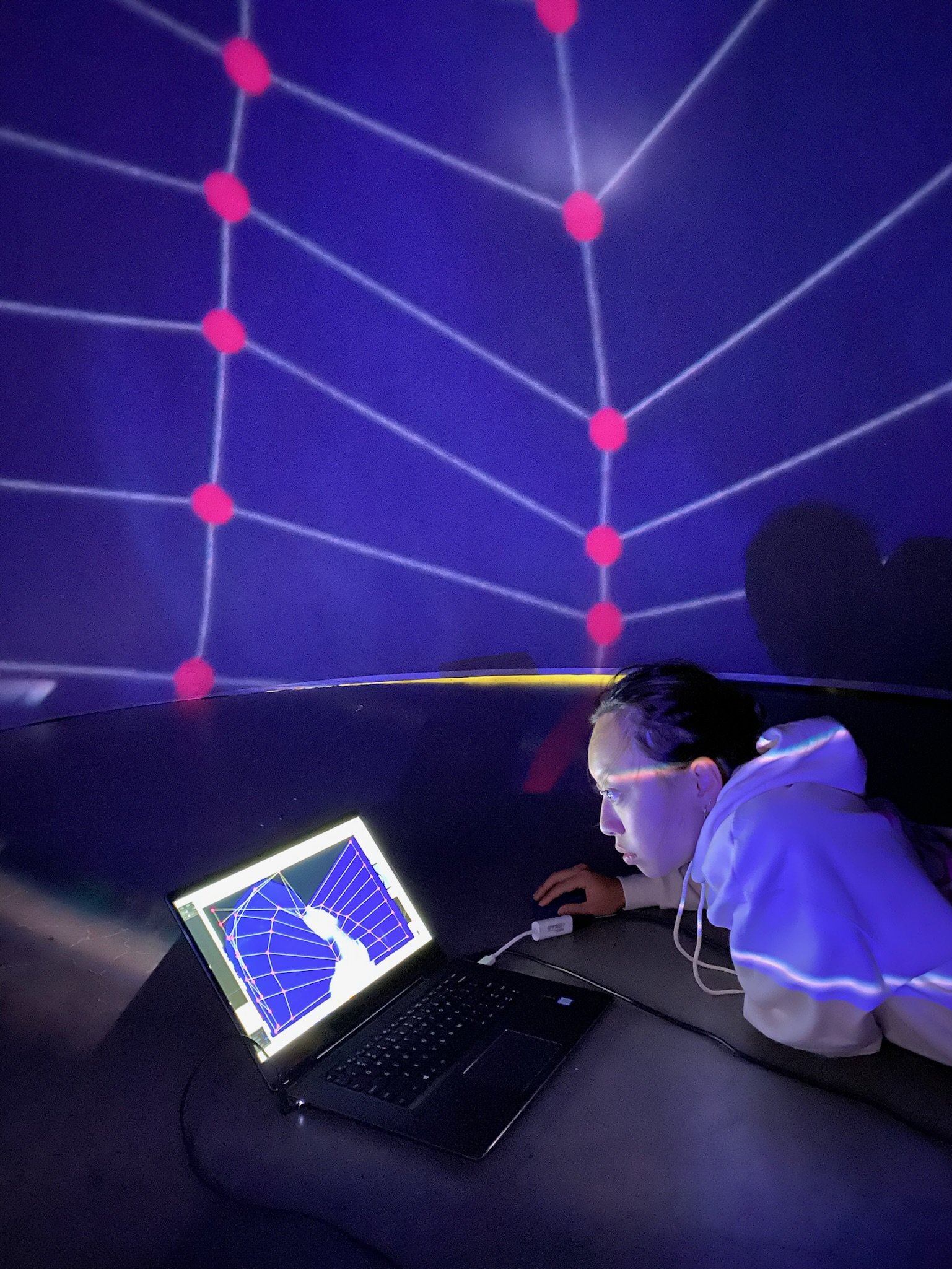











Creosphere: Immersive Experience Design
Wander to Wonder
What is Creosphere?
Immerse yourself in our Creosphere dome with interactive projection art.
Creosphere is Stanford's first immersive, interactive, popup art experience! We aim to create more accessibility to art on campus, provide the present moment, and bring creativity into students' everyday lives.
Team: Katrina Liou, Tracy Do, Chloe Huang, and Kai Ssempa
Timeline: 20 weeks
How does Creosphere work?
We work with student artists to produce a selection of pop-up projection art exhibitions inside our “creosphere” inflatable dome. Utilizing projection mapping onto the interior surface of the dome, Touchdesigner software, and infrared sensors that intakes the viewer’s bodily movement, a viewer can interact with the immersive projection art. You can experience 10 foot tall blooming flowers, dive with jellyfish, swim with turtles, explore the vibrancy of our coral reefs, or soar through the sunset on the cusp of earth into the depths of the universe.
Utilizing a mix of video art, project mapping, and infrared sensors, we project our experience to the interior surface of a 15-foot inflatable dome. When a viewer enters the space, their presence alters the projection, making their experience interactive.
Our mission is to inspire playfulness, innovation, and open mindedness through projection art and collaboration with student artists.
Research and Needfinding
Insights and Opportunity Areas
(1) Non-artist students feel less creative once they reach college because they occupy themselves with tasks that leave little room for art.
(2) Student artists say that art is inaccessible for students on campus, which is why they don’t interact with art, even if they have the time.
Our Idea: Immersive Art
Provide an immersive, interactive projection art experience to students on campus that facilitates co-creation and creative discovery
Goals
Instill Creative Confidence: Make students feel inspired to bring art back into their lives
Provide Accessible Art on Campus: Bring art to the students in the pop-up dome experience
Improve Mental Health: Encourage students to be in the present and open minded through art
Prototyping: Telling a Story through Video Art
In prototyping the video art that is projected onto the surface of the dome, we started by brainstorming the different emotions we wanted our audience to feel throughout the experience. We then sketched out the sequence of scenery we wanted to follow, along with the color pallet progression.
The view starts in pitch darkness in the glowing deep sea. Moving vertically, we swim through open ocean and surface to coral reefs and calm beaches, making the viewer experience positive emotions with sunlight scenery. Emotions intensify as you move to running rivers, roaring waterfalls, and thundering skies. After a brief storm, the skies clear to falling leaves on a lake and blooming flowers. Zooming out to an aerial view of the world, the viewer is prompted to question their perspective as a human on the ground.
Prototyping: Touch Designer
Touch designer is a software that performs projection mapping, interoperability (input devices, web connectivity, video and audio devices), and leverages high performances media systems. We hooked up an Xbox kinect infrared sensor that input the viewers’ bodily movements to influence the video art that was projected onto the interior of the dome. In addition to the software, we prototyped with a spherical mirror to reflect the projection onto a concave surface, as well as other lighting systems.
Incorporating Student artists
In our prototype, we collaborated with student artist Lina Flower and incorporated her art piece “Don’t Look, Feel!” Her piece sat at the center of the dome and invited viewers to sit around a reflective disk and feel without seeing what they were touching. Different textures ranging from natural materials like wet grass, to chunky objects like legos brushes against the “viewers” fingers as the disk spins.















